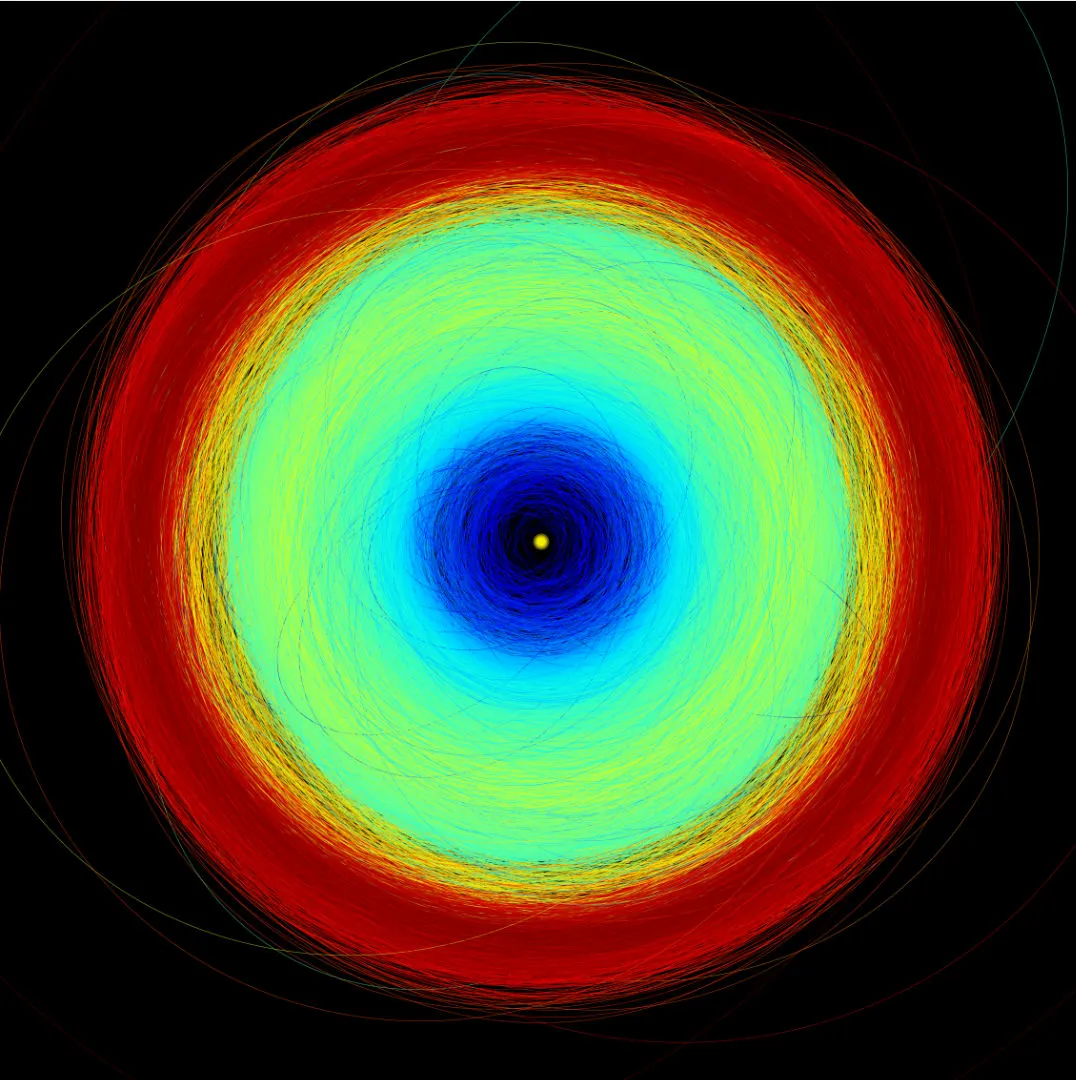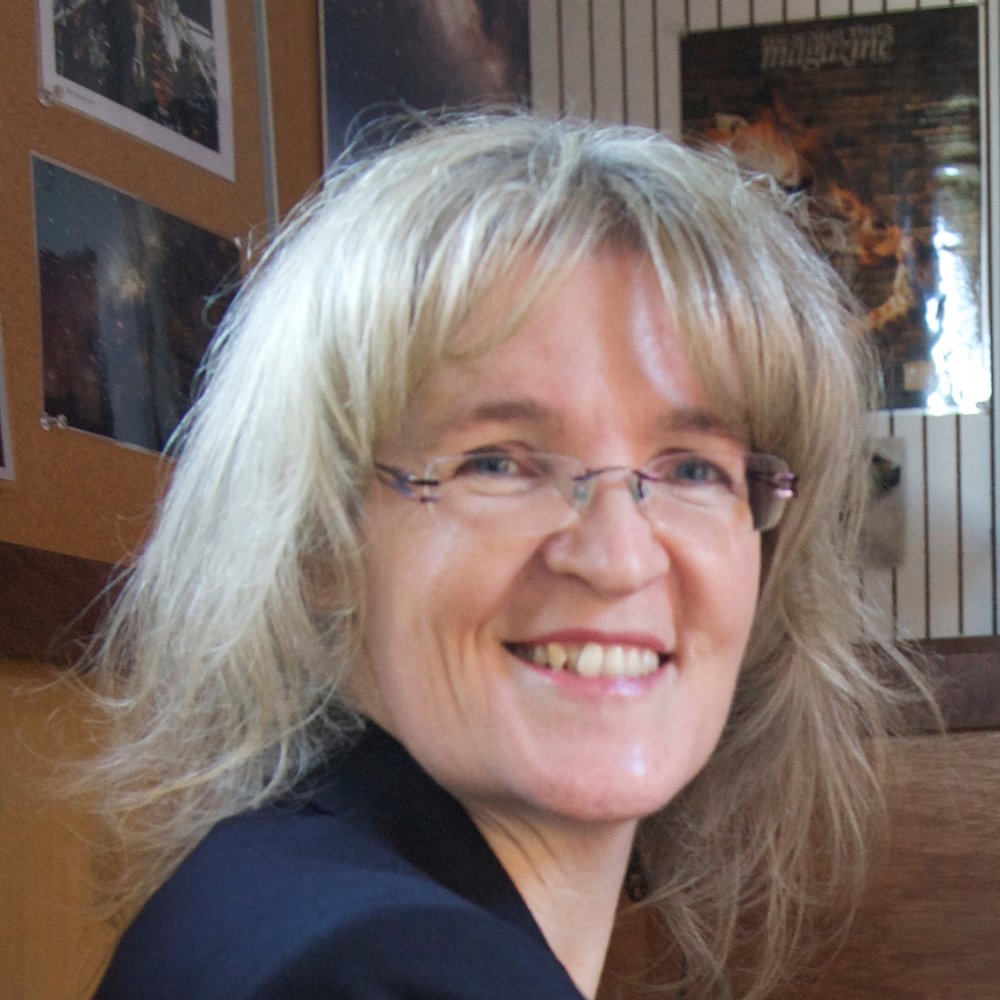On 15 January 2025 after more than 11 years in space, one of the most consequential space missions of recent times completed its task: the Gaia space telescope made the last its survey of the Milky Way.
The result is the largest and most precise map of our Galaxy in three dimensions; a vast stellar census detailing motions, luminosities, temperatures and compositions, which has revolutionised our understanding of our home Galaxy and space beyond.

Launched by the European Space Agency on 19 December 2013, the top-hat shaped spacecraft travelled 930,000 miles (1.5 million km) outwards from the Sun to gravitationally stable location known as Lagrange point 2.
Here it orbited our star in the shadow of our home planet, in the same way that the James Webb Space Telescope has done since it arrived in the same region of space in 2021.
Surviving solar radiation and micrometeorite bombardment, Gaia completed more than 3 trillion observations of 2 billion stars and other objects.
How Gaia mapped the Milky Way
Gaia's surveying technique was a little different to Galaxy-mapping missions of the past, which have used radio and infrared wavelengths to map gas, dust and stars.
Gaia used the distance to its targets to its advantage, measuring the apparent back and forth movement of stars caused by the changing perspective of Earth as it orbits the Sun – the technique known as parallax.
Its two optical telescopes and three science instruments (measuring position, velocity and brightness) repeatedly took the positions of objects an incredible 400,000 times fainter than what the human eye can see.

Not only that, for its brighter targets its surveying was accurate to within 24 microarcseconds – the diameter of a human hair 1000km away.
With its sophisticated, wide-angle CCD cameras and a mirror area collecting 30 times more light than previous space missions like it, Gaia has measured stellar motions and positions 200 times more accurately than its predecessor, the Hipparcos space telescope.
By combining distance data with the brightness, colours and apparent motion of stars, Gaia not only mapped the Galaxy in 3D, it revealed the Milky Way’s dynamics and possible evolution.

Surveying the shape of our galaxy
The shape of the Milky Way is familiar to many, with its central ‘bar’ of stars slicing its core, multiple spiral arms and a diffuse halo.
Scientists had assumed this halo was beachball shaped and homogeneous but Gaia has revealed it is elongated, tilted and stretched like a football or rugby ball.
We have known since the 1950s that the disc is warped and asymmetrical but not why.
Gaia’s data offers a possible answer, attributing the warping to an ongoing merger with the Sagittarius Dwarf Galaxy, which has swung through our Galaxy’s disc three times over a 4–5-billion-year period.
Like a stone tossed into a pond, the ripples and waves that result have caused the wobble and warp, simultaneously prompting multiple bursts of star formation – one of which kickstarted the birth of our Sun.

Uncovering archaeology
The Sagittarius Dwarf Galaxy’s collision was not an isolated occurence: a ‘family tree’ of smaller galaxies has influenced our own.
Gaia discovered a stream of some 30,000 stars moving like a galactic ghost in a direction opposite to our Galaxy’s other billions of stars and on elongated trajectories.
They had the chemical composition of a different home galaxy, for some reason named Gaia-Sausage-Enceladus.
This merged with the Milky Way around 10 billion years ago, significantly sculpting the form and evolution of our Galaxy ever since.
Hundreds of variable stars and an entourage of 13 globular clusters, all on similar trajectories, originated in the same system.
In one of several other merger events, a stellar stream know by scientists as Arjuna/Sequoia/l’itoi suffused the Milky Way’s halo with strangely moving globular clusters and ancient, high-velocity stars, the latter hurtling towards and away from our Galactic centre.

Detail in our Milky Way
Gaia’s data paints the Milky Way in more detail than ever before. Ours is a Galaxy riven with wavy structures made of gas, empty cavities, bursts of star formation, groups of star clusters whirling around its core, and neighbourhoods filled with ancient stars.
In 2020, it spotted the largest gaseous structure ever seen in our Galaxy; a long, thin ensemble of interconnected stellar nurseries in a spiral arm close to Earth.
The galactic mapper has also shed more light on our local neighbourhood.
We know our Sun traverses an almost empty, peanut-shaped patch of space as it orbits the Galaxy known as the Local Bubble.
But as a result of Gaia’s mapping, scientists now think exploding stars were responsible for this phenomenon, triggering the newborn stars we see in our Galactic neighbourhood today.
Gaia’s ‘archaeology’ has also shown the Milky Way’s core is full of ancient stars, while further out its data divulged a huge number of spinning filaments; remnant ‘fossilised’ spiral arms spun up over time by passing satellite galaxies.

Testing cosmology’s big questions
Cosmologically, by watching the large-scale motion of stars, Gaia has enabled scientists to infer the distribution and gravitational effects of dark matter – the invisible substance thought to glue the entire Galaxy together.
Furthermore, in synergy with the Hubble Space Telescope, Gaia’s greater accuracy has recalibrated the Universe’s expansion rate, known as the Hubble Constant.
This number, used to estimate the age of the Universe, is achieved by gauging distances between nearby galaxies and uses Cepheid variable stars as cosmic yardsticks; by comparing their intrinsic brightness with their apparent brightness as seen from Earth, scientists calculate stellar distances.
With its ability to precisely measure parallax, Gaia fine-tuned this yardstick.

But the Hubble and Gaia measurements are at odds with the Cosmic Microwave Background data obtained from ESA’s Planck observatory, revealing a serious discrepancy between the expansion rate nearby and in the more distant, primeval Universe – a ‘tension’ that has yet to be resolved.
Beyond our Milky Way, Gaia has created the largest 3D-map of around 1.3 million quasars, the furthest, located in the deep cosmos, shining when the Universe was only 1.5 billion years old.
Even Einstein’s General Relativity theory has been stringently tested to a level of precision not possible with previous instruments.
With its precision measurements of star positions, Gaia has empowered scientists to observe and quantify the gravitational bending of light caused by the Sun – a key Einsteinian prediction.

Gaia space observatory, 13 June 2022
Credit: ESA/Gaia/DPAC; CC BY-SA 3.0 IGO, CC BY-SA 3.0 IGO. Acknowledgements: P. Tanga (Observatoire de la Côte d'Azur)
Turning to the Solar System
Closer to home, Gaia amassed pinpoint positions and motions for 150,000+ asteroids.
In years to come scientists can forage deeper in this data to dig out asteroids that show wobbles, caused by companion moons.
And that’s not all: because the space telescope collected the chemistry data of these space rocks in the largest ever catalogue of ‘reflectance spectra’, it will also be possible to tell what materials they are made of.
Having lasted almost twice as long as its original lifetime, Gaia’s longer-timeframe all-sky survey has enabled astronomers to detect thousands of new exoplanets – either through changes in stellar positions due to gently tugging orbiting planets or by recording a dip in brightness as a planet transits a star’s face.
These include gas giants such as Gaia-4, 244-lightyears away and 12 times more massive than Jupiter; brown dwarfs and planets orbiting low-mass stars.

In the coming years these all-sky exoplanet catalogues will allow scientists to better understand the characteristics of the different types of planets and and how often they occur.
Now, at the end of its mission, with its nitrogen tank emptied after several weeks of technological testing, Gaia is being relocated to its ‘retirement home’, an orbit very close to the Sun and far from Earth’s sphere of influence.
But there is no need to mourn: with less than one-third of its astrometric and photometric dataset published so far, astronomers will benefit from the mission through two monster data releases, one scheduled for mid-2026 and the other for the end of this decade.
Gaia has done for our understanding of the Milky Way’s origin and evolution what the Hubble Space Telescope is doing for cosmology.
This venerable ‘cosmic cartographer’ may have closed its gaze on the cosmos, but its influence will be felt for many years to come.
